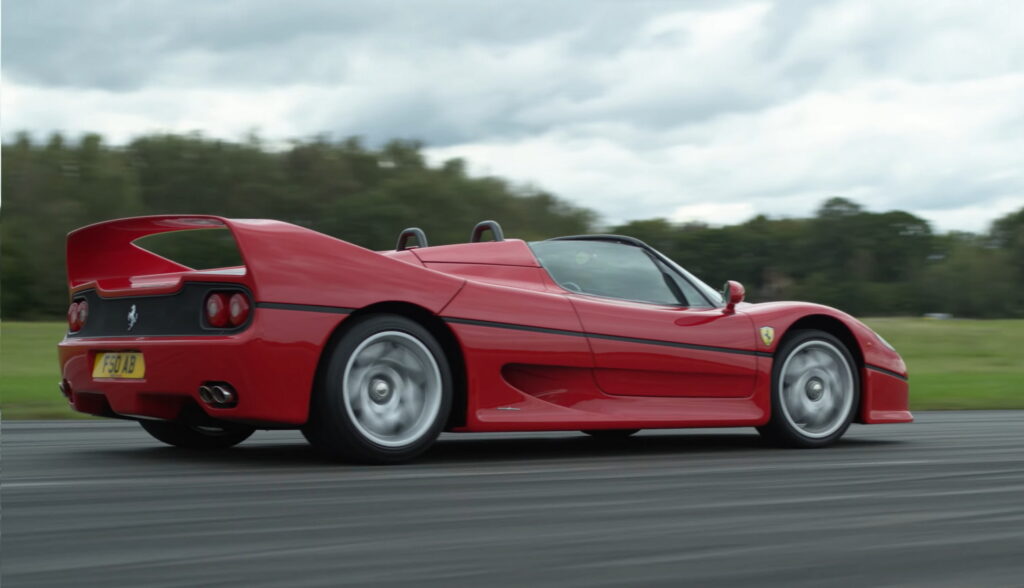Chris Harris believes that time has allowed the F50 to ripen perfectly, and that is now one of the best Ferraris ever made
November 6, 2023 at 20:40
 –>
–> 
–>
The Ferrari F50 has long lived under the shadow of the F40, and while there’s no shame in being unable to outshine that particular legend, it may be worth reconsidering the younger model’s legacy. At least that’s what Chris Harris believes, calling it one of the most ambitious Ferraris ever made.
Although the F50 has the right shape and the right engine note, the fact that it was long considered an also-ran means that it might be time to become reacquainted with its many charms. For starters, it is among the most focused racecars-for-the-road in recent memory.
And that’s not hyperbole; it had a carbon tub when other supercars were still making due with ancient technology, and the engine block came from Ferrari’s F1 program. You need only look at the long-delayed Mercedes-AMG One for proof of how difficult it is to put an F1 engine in a road car.
advertisement scroll to continue
Read: An Immaculate 1995 Ferrari F50 Could Sell For $6.5 Million Next Month

Once it hit the road, the 3.5-liter V12 was capable of producing 512 hp (382 kW/519 PS), and it was attached to a six-speed manual transmission. As further proof that this was a racecar for the road, the engine and gearbox were stressed members. That all sounds cool and, according to Harris, makes for a spectacular driving experience.
“Put bluntly, there is no better engine, gearbox combination for pure enjoyment than this V12 and that gearbox. It is — oh, my God, what’s the adjective? Mesmerizing,” said Harris in a recent video. “It’s fast, but it requires a forceful shoulder to make it work well. It’s mechanical. It flatters you when it goes well, it punishes you when you don’t do it well.”
The other appeal of the F50 is its age. The last Ferrari range-topper to offer a manual transmission, it came about during a Goldilocks era of vehicle design. Now pushing 30, the F50 isn’t so old that it’s annoying, but it’s too old to have electronics that get in the way of the driving experience.
And perhaps that’s what the F50 needed most of all: time. Although it was always fast, and always cool, as a new supercar, it was too intense to pose in at galas (or wherever rich people go to be seen). As a classic, the expectations are different. Some discomfort and intensity are acceptable in older cars. In exchange, owners hope for a memorable driving experience, and a repeatable story, all of which this has.
It may finally be the F50’s time to really shine and, as Harris points out, collectors appear to have acknowledged that, as prices rise. Bids for this particular model, which is for sale on Collecting Cars, have already cleared £2,000,000 ($2.4 million USD, at current exchange rates).
[embedded content]
